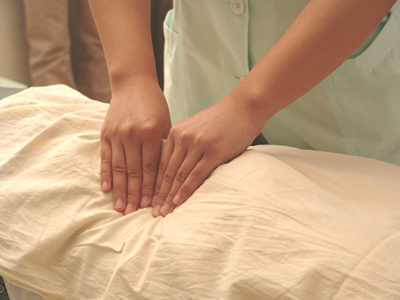Positive Health Online
Your Country

Chinese Tuina for Acute Lumbar Strain
listed in massage, originally published in issue 121 - March 2006
Tuina is an Oriental Bodywork Therapy that has been used in China for 2,000 years. Tuina uses various techniques to increase the circulation of Qi and blood in order to promote healing and relieve pain. The goal in every session is to balance the flow of Qi energy through the meridians and to harmonize the circulation of blood through the vessels. Pressure varies from light to heavy and the rate of application from slow to quick.
History of Tuina
Tuina dates back to the Shang Dynasty of China 1700 BCE. Oracle bones show that massage was used to treat children's diseases and digestive complaints in adults. By 600 CE Tuina was included in the Imperial Medical College as a separate department. Tuina flourished throughout China until the Qing dynasty where it was suppressed along with other Chinese cultural arts. Following the Communist revolution, Tuina was restored along with other traditional medical arts and was included in the creation of the current system of Traditional Medicine Colleges.
Acute lumbar strain
Acute lumbar strain is self-limited low back pain associated with muscle spasm with limitation of motion of varying severity. This is usually brought on by some type of sudden over-exertion while lifting, bending, straining, or abrupt movement. The symptoms may occur immediately or develop over the course of a day as muscle spasm increases. In the absence of fracture or herniated disc, symptoms subside gradually in days or weeks. If symptoms persist or are the result of a severe injury such as blunt trauma or a fall, X-rays are indicated to rule out a fracture.
The author found Tuina is very effective for treating acute lumbar strain using several types of Chinese Tuina techniques during her studying and practicing.
Chinese Tuina Techniques and Acupuncture Points
The commonly-used techniques of Chinese Tuina consist of twenty categories which are Pushing Manipulation with One-Finger Meditation, Rolling, Kneading, Rubbing, Scrubbing, Grasping, Pressing, Flat-pushing, Digital-pressing, Digital-striking, Patting, Tapping, Vibrating, Foulage, Holding-twisting, Shaking, Wiping, Rotating, Pulling, Traction and Counter-traction.
The acupuncture points (or holes as the Chinese term xue is more aptly translated) are the locations where the Qi of the channels rises close to the surface of the body.
The following techniques and acupuncture points are used during the treatment of acute lumbar strain.
Gun-Rolling: Using the thenar or the ulnar aspect of the palm as the force-applying surface, the practitioner lowers his shoulder, drops elbow with his arm erected and his palm setting upright, performs cyclical flexion, extension, inward and outward rotating swinging of both elbow joint and forearm, to effect the extension and flexion of the wrist joint, rolling the round back of the hand to and fro on the region to be treated.
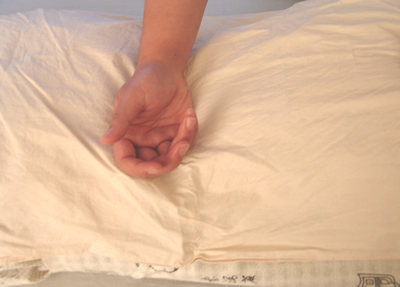
An-Pressing: This method involves pressing the surface of the body with one's fingers, palm and elbow with gradually increasing force.
The direction of the force should be steadying, perpendicular and downward. Violent force should be avoided.
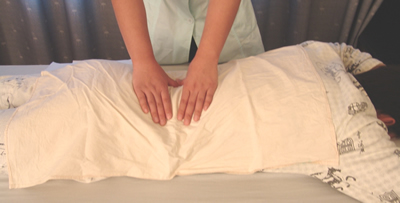
Rou-Kneading: A circular movement is made on acupuncture points or certain locations of the body by using the palm or fingers, pressing the subcutaneous tissues to move together with natural movements of the forearm and wrist. The frequency is more than 120 times per minute.
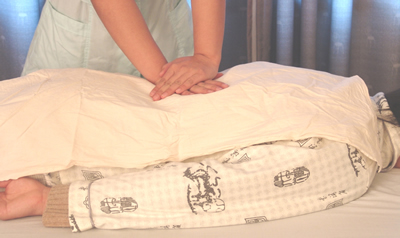
Na-Grasping: This involves a 'grasp' on either acupuncture points, or certain locations of the body using the thumb, index and middle fingers (or the thumb and other four fingers). The movement involves squeezing the soft tissue fibres inward rhythmically and sequentially. The force exerted by fingers should be soft and consecutive as well as increased gradually. It is necessary to grasp as much of the muscle as possible by one's fingers (without using the nails).
Tui-Pushing: This involves pushing straight in a single direction with the fingers, palm or elbows. The fingers, palm and elbows
must be moved slowly while pushing. The pushing should be conducted with even distribution of force.
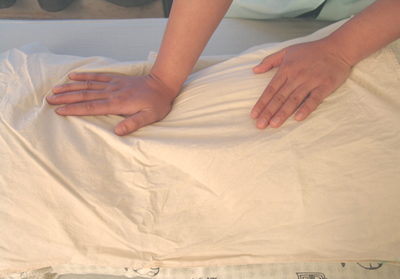
Qianyin-Traction: Fix one end of the extremity or joint and then pull the other side. The force should be even and consecutive.
Violent force should be avoided. This method can be applied on the head, neck, shoulder, lumbar, wrist or fingers.
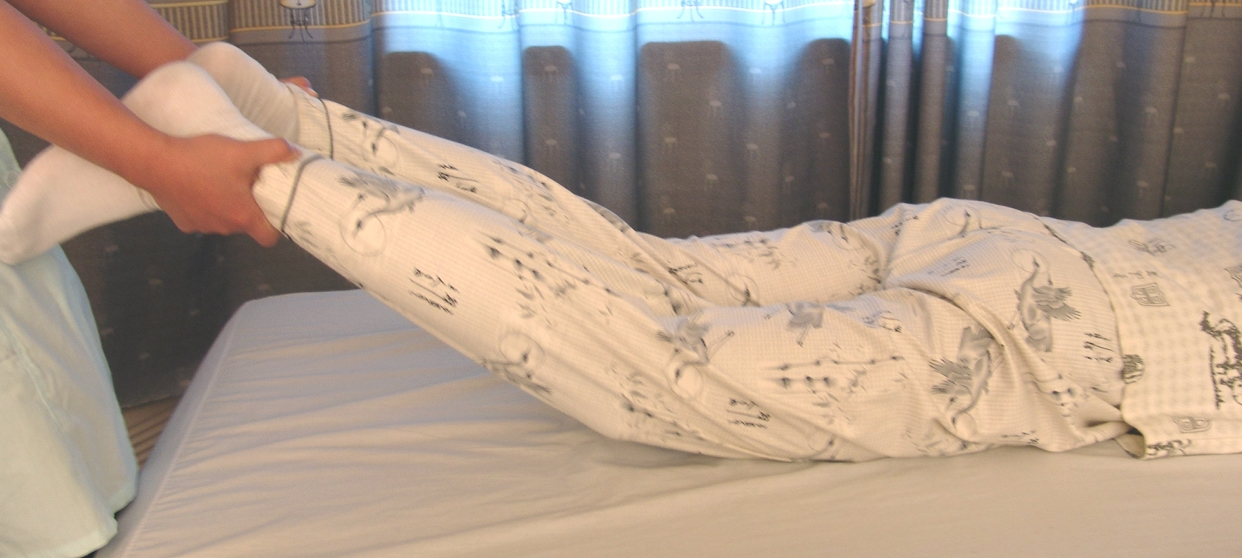
Yao-Rotating: This involves passively rotating the body by the axis of the joints. This method can be applied on the neck, shoulder, hip or ankles. The force should be gentle, steady and increase gradually. The direction and amplitude of rotation should be within the normal physiological range.
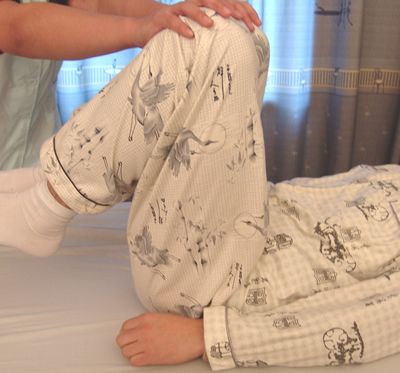
Ashi points: refers to pressure pain points.
Shenshu (BL23) Location: 1.5 cun lateral to the lower border of the spinous process of the second lumbar vertebra.
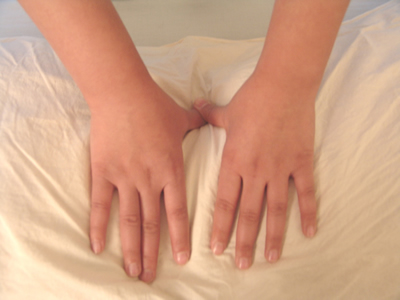
Wenzhong (BL40) Location: Midpoint of the transverse crease of the popliteal fossa.
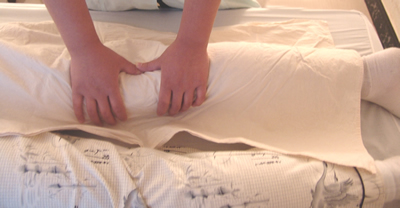
Chengshan (BL57) Location: Directly below the belly of m. gastrocnemius, on the line linking Weizhong (BL40)
and tendo calcaneus, about 8 cun below Weizhong (BL40).
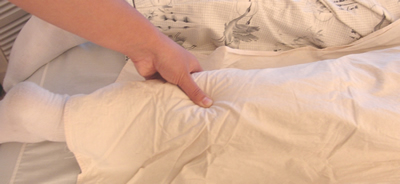
Yaoyangguan (DU3) Location: Below the spinous process of the fourth lumbar vertebra, at the level with the crista iliaca.
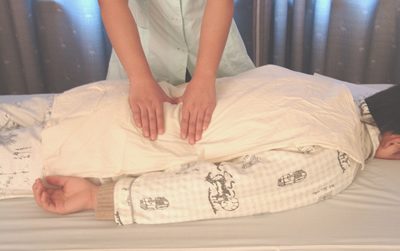
Process
1. With the client prone, relaxing body. The practitioner stands beside the affected side, and applies rolling, pressing, kneading, grasping, and pushing to the muscles of the waist for ten minutes. It can relieve the spasm of muscles and improve local blood circulation.
2. Apply pressing to the Ashi points, Yaoyangguan (DU3), Shenshu (BL23), Weizhong (BL40), and Chengshan (BL57) for one minute respectively. It has the function of alleviating pain and releasing conglutination.
3. Apply pressing and kneading to the spastic muscles for two minutes.
4. Let the client hold the table and relax their waist. Hold the wrist joint and apply traction. Swing the waist for two to three minutes.
5. Rotation: With the client supine, bend the knee and hip joint. Hold the knee joint and apply rotation to the waist for one to two minutes.
Notes:
1. It is good to sleep on a hard bed during the treatment, and prohibit movement for three to five days in order to heal the injured tissues.
2. The practitioner needs to apply all techniques gently so that new trauma does not appear.
3. The client should keep the local area warm, and enhance outside movement after the symptoms are relieved.
Case Studies
Mr Zhang, male, a 28-year-old worker. He felt sharp pain on his waist due to lumbar strain resulting from holding heavy things. Thus the movement of the waist was limited. After he received Chinese Tuina Therapy, the pain was relieved obviously. Three days later, the symptoms had disappeared, and the movement of the waist was as usual.
Ms Xu, female, a 52-year-old housewife strained her waist due to using the wrong position for wiping a table. She began to experience progressive pain several hours later, and could not move as usual. She visited me and received the Chinese Tuina treatment. It was magic. She recovered the next day.
Bibliography
Tuinaology. Zhang Yisheng. People's Medical Publishing House.
Chinese Therapeutic Methods of Acupoints. Li Shaozhi, Tan Xiaohong Hunan. Science & Technology Press.
Comments:
-
No Article Comments available
